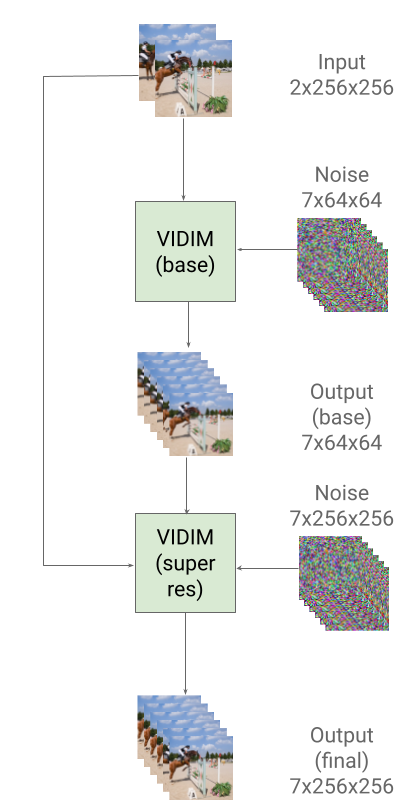Abstract
We present VIDIM, a generative model for video interpolation, which creates short videos given a start and end frame. In order to achieve high fidelity and generate motions unseen in the input data, VIDIM uses cascaded diffusion models to first generate the target video at low resolution, and then generate the high-resolution video conditioned on the low-resolution generated video. We compare VIDIM to previous state-of-the-art methods on video interpolation, and demonstrate how such works fail in most settings where the underlying motion is complex, nonlinear, or ambiguous while VIDIM can easily handle such cases. We additionally demonstrate how classifier-free guidance on the start and end frame and conditioning the super-resolution model on the original high-resolution frames without additional parameters unlocks high-fidelity results. VIDIM is fast to sample from as it jointly denoises all the frames to be generated, requires less than a billion parameters per diffusion model to produce compelling results, and still enjoys scalability and improved quality at larger parameter counts.
